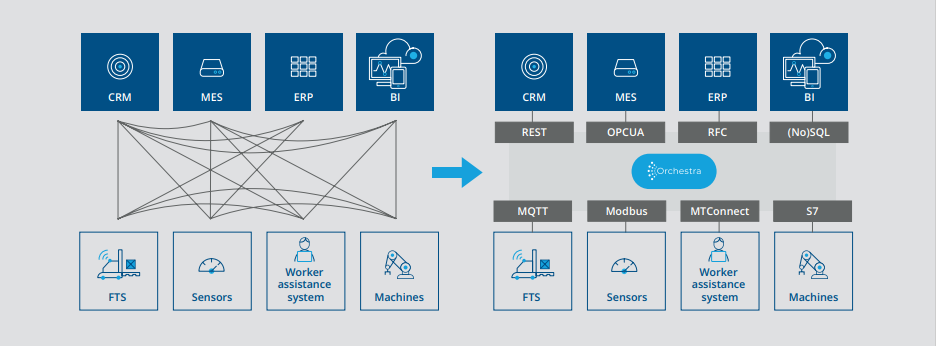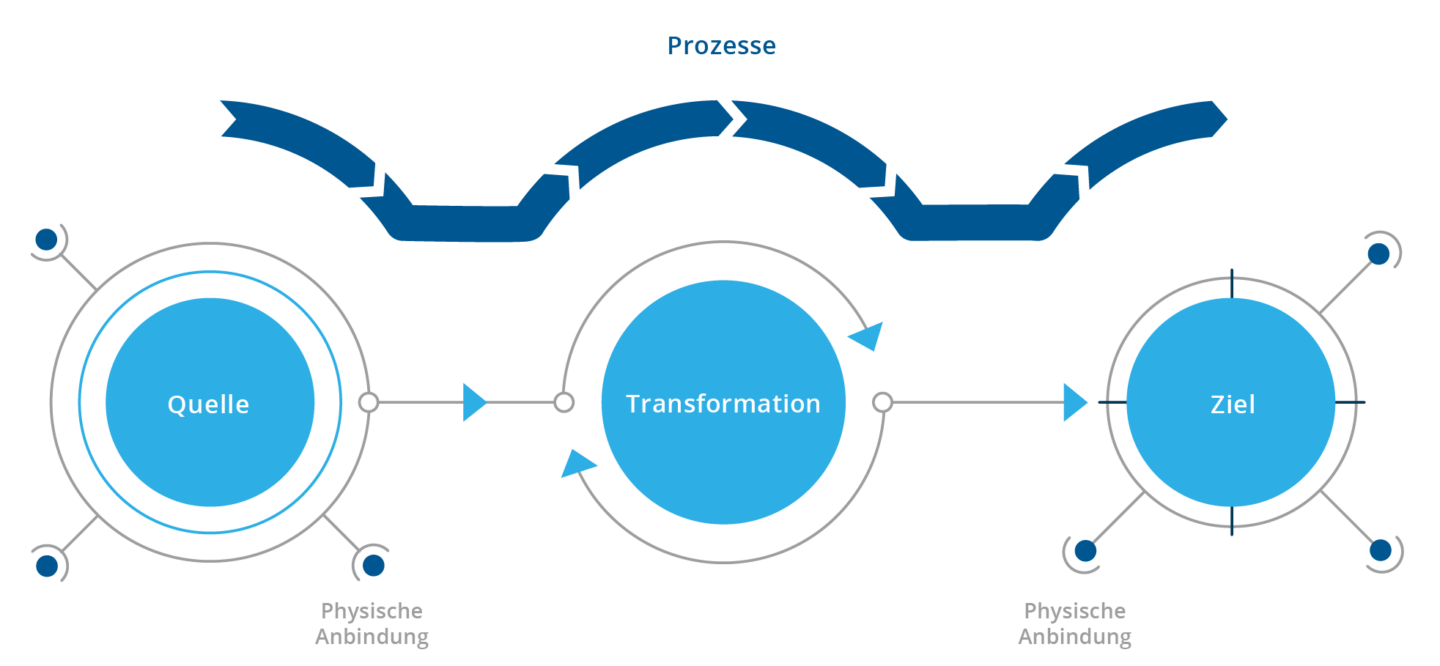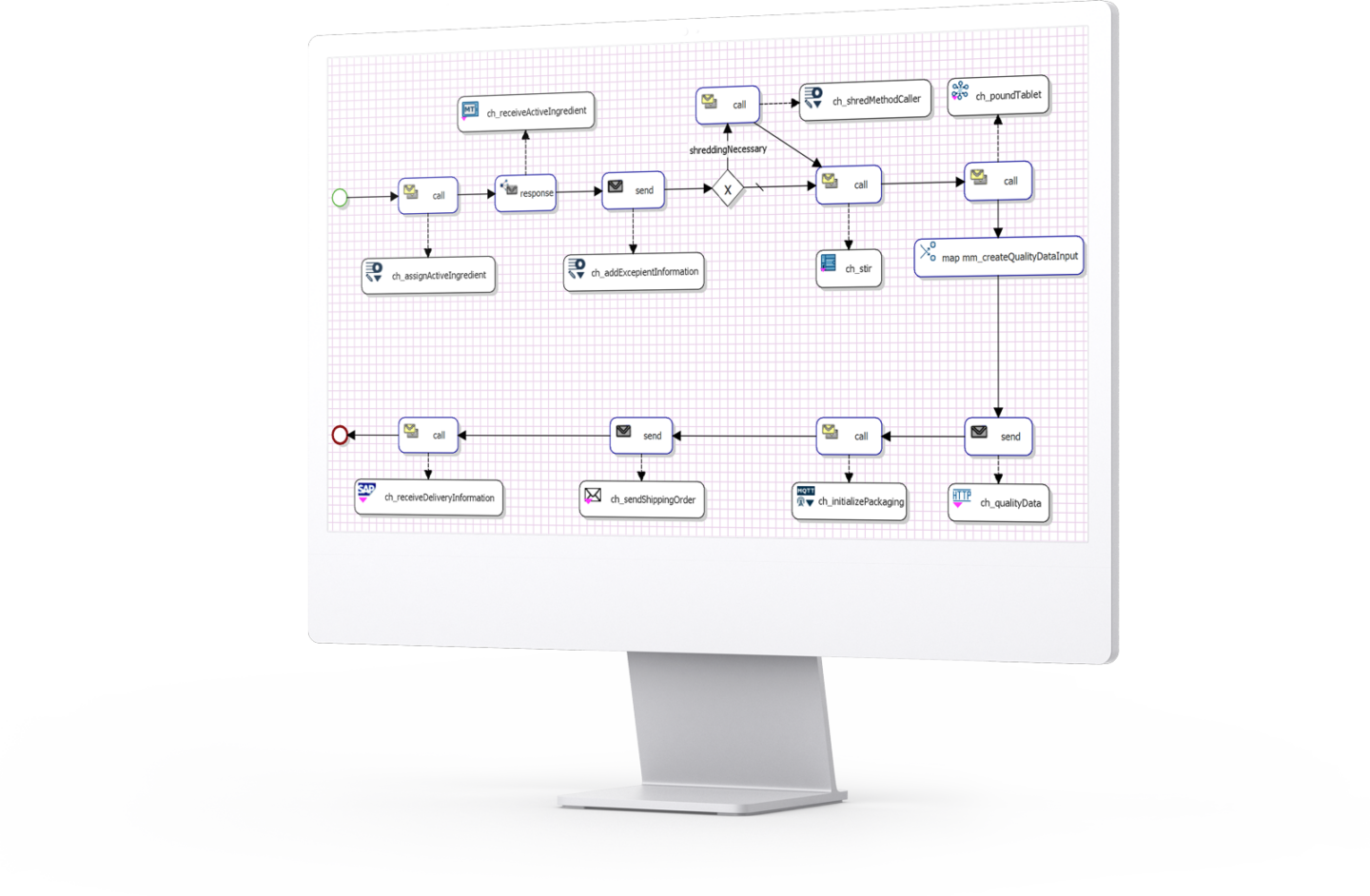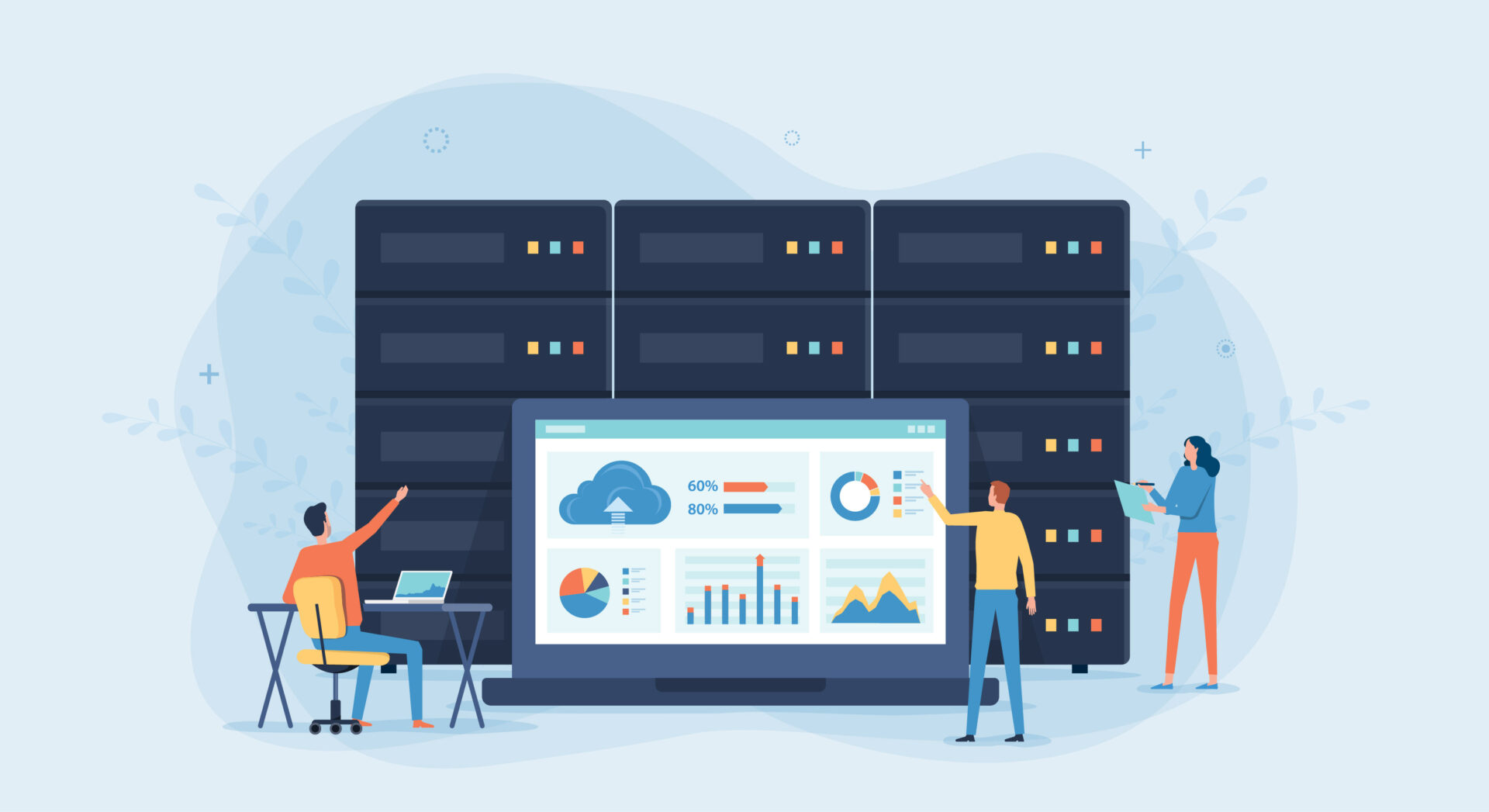Release the power of your data
with Orchestra as a data hub that fits seamlessly into your IT architecture.
Slim and powerful
With Orchestra, we support you in the introduction of a strategically planned integration architecture. Orchestra fits seamlessly into your existing IT architecture as a central platform through which all methods and procedures for data communication can be provided and executed.
Reduce the number of your interfaces
When introducing a new system, it is not necessary to develop an individual interface for each system (as is the case with conventional point-to-point connections). With Orchestra, a central, cross-system flow control can be established. The Orchestra ESB is a modular and at the same time highly compatible platform for the integration of applications in the company.
Through Orchestra’s open architecture, we support you in constantly connecting new applications or replacing old ones. The publish/subscribe mechanisms decouple the applications from each other more strongly than conventional point-to-point connections. In this way, you reduce dependencies and design future-proof connectivity.

Three components –
one application
The Orchestra Designer
The configuration and development of use cases takes place in Orchestra Designer. One or more technical processes map a use case in a scenario.
All elements, from the technical process to the mapping for data transformation to the channels for communication with third-party systems, can be configured and tested graphically.
The Orchestra Monitor
The web-based Orchestra Monitor is our tool for operating the Orchestra platform. It monitors the Orchestra Runtime. So you can see what is running, what is not running or running differently and where you need to intervene. Besides monitoring, the configuration of scenarios is the second central function of the monitor. You can set environment variables, connection parameters and defined variables here. In regulated environments, this works Good Manufacturing Practice (GMP) compliant thanks to Audit-Trail.
The Orchestra Runtime
The Orchestra runtime executes the defined scenarios in a platform-independent, reliable and scalable manner. Orchestra runs on Windows as well as Unix systems and is available as a container app. For special availability requirements, we offer Orchestra as a highly available cluster solution. Another advantage: From industrial PCs at the edge to high-performance cloud environments with load balancers, we always use the same interface. The elements used are easily recognized and found again.
Modelling and Channels
During modeling, interfaces are mapped in Orchestra scenarios. The modeling of an Orchestra scenario is done in Orchestra Designer with the help of BPMN 2.0 workflows.
The connection of external systems via any protocols, formats and technologies is done by a multitude of adapters (channels). For further processing, external formats are transformed into native Orchestra formats in order to optimally control the activities used in the following workflow. Orchestra workflows can contain any number of input and output channels. This is the basis for enriching data into information. As soon as the desired information is available, it is made available to all subscribed systems in the correct format.

Mappings and Processes
By means of mapping all formats can be transformed and edited. The definition is done graphically, via JSON, XSLT(HTML) or JAVA.

Administration and Operation
The web-based Orchestra Monitor is used to configure and monitor and administer the scenarios. If expected messages fail to appear or unexpected errors occur, Orchestra alerts the operations team and pauses the affected processes.
For seamless integration and deployment (CI/CD), we provide multiple Orchestra installations. Only when all steps in the deployment pipeline have been successfully completed are changes to the scenarios applied to the production system.

What our customers say
The implementation by soffico corresponds to our idea of a lean and scalable solution. Based on the knowledge gained, we are working together with soffico and based on Orchestra on a comprehensive solution for all our EDI processes.
Technical advantages
References

References
The digitization of entire value chains presents companies in industrial manufacturing with new challenges in dealing with information and knowledge. Effective planning and optimization requires accurate data on production processes, suppliers, customers and systems along the entire supply chain. Knowledge management in the context of Industry 4.0 is changing the way information is handled. After all, the numerous data collected by machine sensors and big data acquisition systems provide conclusions about processes, workflows, performance and potential for improvement – and must be used sensibly on the way to the smart factory.
Rica Holzmann

